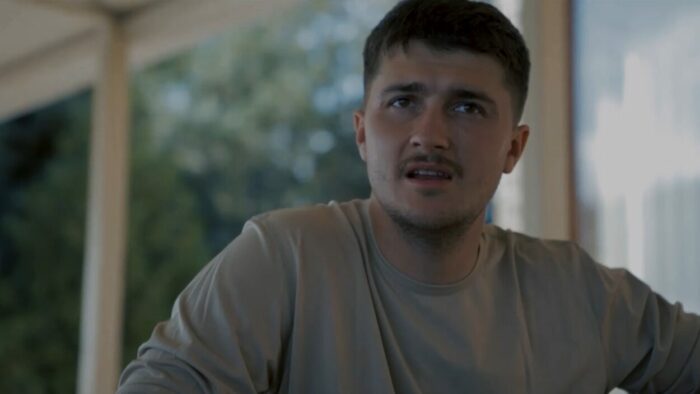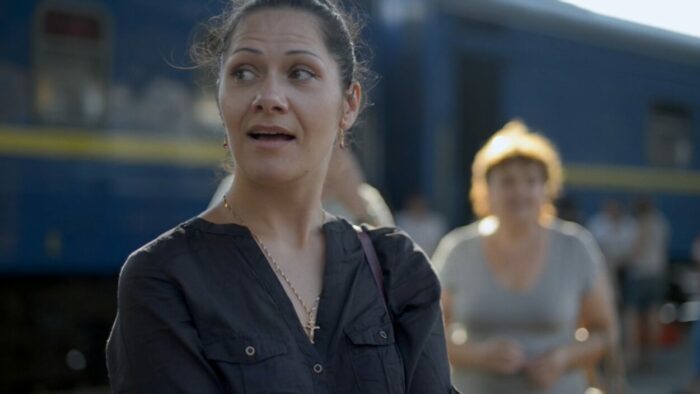For many of us in the West, Russia’s invasion of Ukraine was one we assumed to have begun on February 24, 2022, when Putin’s forces launched a full-scale strike that made global headlines. The most violent conflict on the continent since WWII, it was a military action that had immediate consequences, devastating the people of Ukraine but strengthening their resolve. Today, some 18 months later, the war for Ukraine’s independence continues. But the conflict in Ukraine dates back far further, further even than Russia’s annexation of Crimea in 2014: the documentary A Rising Fury, co-directed by Ukrainian-born filmmakers Lesya Kalynska and Ruslan Batytskyi, explores the roots of that conflict through the eyes of an idealistic young soldier enlisted to defend his country’s fragile, hard-won independence.

Filmed over eight years, A Rising Fury traces the seeds of the Ukraine conflict from the events just preceding the Revolution of Dignity in 2014 to the 2022 full-scale invasion. Pavlo Pavliv was, in his youth, a disaffected young Ukrainian who sought camaraderie in the sport of Strikeball. (In America, it’s commonly called Airsoft, a team-based military survival game: Paintball without paint, so to speak.) There he found friendships, purpose, and in the form of his intense, rugged coach Igor, a mentor. It was a formative point in young Pavlo’s life.
A second was his meeting Svitlana Karabut, a charismatic young volunteer with whom Pavlo falls in love. A Rising Fury traces Pavlo’s coming of age from a naive young gamer to a man who must fight for his country, risking his life and his love in the process. In this way, the film can both navigate the general outline of the Russo-Ukrainian war and Pavlo and Svitlana’s touching love story in its specifics. Both protagonists are intelligent, articulate, and personable, ideal subjects for the story being told: their story is one you can imagine being told in a novel or fiction film, such are the heights of its drama.

Pavlo’s time as a Strikeball competitor makes him an ideal recruit in more ways than one. As the conflict heightens, Ukraine finds itself in increasing need of able-bodied young men to defend the country; its official forces are ragtag. Pavlo’s skills, learned at the hand of his old Strikeball coach Igor, make him an excellent soldier, and he is almost immediately promoted to a position of command.
Yet Igor’s presence in young Pavlov’s life was no innocent coincidence. Instead, his was a long con, a highly planned, methodically executed stratagem of psychological warfare. Igor was, as Svitlana cleverly deduces, a plant: his recruitment and training of young Ukrainian men was part of Putin’s plan to infiltrate not just the land of Ukraine but the minds of its people and the able bodies of its young men. (Another excellent documentary, the Oscar-nominated House Made of Splinters, follows in the wake of news that Putin’s Russa routinely deports children from Ukraine to Russia to make them citizens there.)

The episode—best not to say more about it than that, to avoid spoiling too much of A Rising Fury‘s narrative—illustrates just how the war there could pit friends against one another, how loyalties could be exploited, how young men could be manipulated to turn even against their homeland. Framing the story of Ukraine’s fight for independence though the story of Pavlo’s difficult coming of age over a decade makes for a film with which almost anyone can identify: like in many a hero’s journey, Pavlo is called from his village, confronted with evil, betrayed by false idols, and must fight for his ideals.
Yet A Rising Fury never loses sight of the general timeline of Ukraine’s fight. Brief titles, timeline markers, and news clips frame the battles in context. The film focuses more on the personal than on the political: there’s little here of Putin’s dubious rationale for the invasion or of the region’s long history of conflict. A Rising Fury presents the war through the eyes of those directly impacted by it. Along the way, we are introduced to others—a rock singer (Ivan Lenyo) and a student/poet (Vadim Vasylchuk) among them—thrust like Pavlo into the war who take up arms and command despite little training.

That filmmakers Kalynska and Batytskyi can present A Rising Fury with such immediacy is nothing short of a documentary miracle. From the film’s first moments—Svitlana driving through a blinding snowstorm to the Donetsk airport in 2015, the site of a Russian attack—our perspective is up close and intimate. The next scene, in a makeshift triage unit, makes clear the grisly consequences of war. Somehow—I am not certain how—Kalynska and Batytskyi have on-the-ground footage from the Euromaidan protests onward as it grew into a full-fledged and violent revolution. At times the camera is so close to the action you fear for its operator’s safety.
Throughout, Pavlo provides his perspective, taking a few brief moments during operations to provide brief explainers before his duties call. Svitlana is shown a bit less “in action,” so to speak, but she also provides some staged interviews assumedly after the events depicted. Aside from that, A Rising Fury‘s approach is direct, using immediate footage from the war to thrust viewers into its midst. That it can present the war with such immediacy is in itself amazing; that it can do so with such conviction and coherence is even more impressive.

As A Rising Fury reaches its final act, it’s impossible not to worry for Pavlo: his side is badly out-trained and outnumbered by Putin’s forces. He’s found, in Svitlana, even more to fight for. The film concludes with a postscript that provides a bit of closure in a conflict that seems, now, without end, one doomed to a long war of attrition. Not all of those depicted will survive: the casualties of the war number as much as 500,000, many of them innocent civilians. A Rising Fury provides both an excellent primer on the conflict and a sobering, though-provoking perspective on those who have lived through it.
A Rising Fury premiered at the 2022 Tribeca Film festival and was nominated for best documentary and other top awards in nine international film festivals. Its festival and theatrical screening schedule can be found on the film’s website: A Rising Fury.



